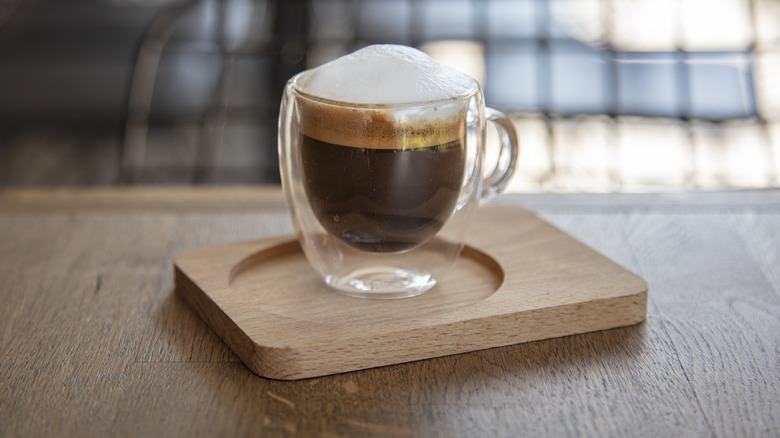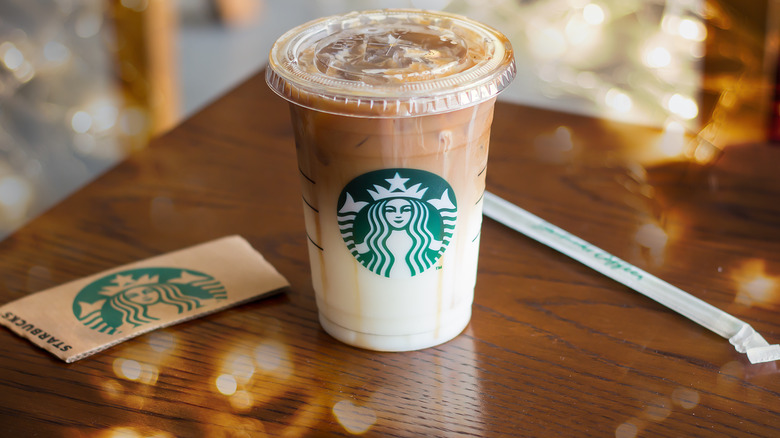What Does The Word 'Macchiato' Actually Mean?
In many ways, the cultural language of coffee is Italian. That's especially true for handcrafted creations served in countless coffee shops across the world. In fact, the founder of Starbucks even credits his journey through Italian coffee culture as the impetus for today's 35,000-plus Starbucks worldwide locations, as of 2022. As Howard Schultz stated in a Starbucks Stories post, "The Italians had created the theater, romance, art and magic of experiencing espresso ... I was overwhelmed with a gut instinct that this is what we should be doing."
Decades later, many Italian-inspired coffee drinks populating American and international coffee shop menus still bear Italian names. Whether appearing in slick coffee-chain stores or tiny local hangouts, the cappuccinos and caffè lattes of today often reflect composition, ingredients, or cultural connections via the Italian association. For example, the word "espresso" means "pressed out" in Italy, which indicates how baristas make the drink, while the "cappuccino" title comes from a renowned order of Italian Franciscan monks known as Capuchin friars.
And then there's the macchiato. One of the most mysterious of mainstream coffee drinks, the macchiato gets right to the point, literally, with its Italian moniker.
Careful how you order
When served in its originally intended form, the espresso-heavy macchiato drink is named for the small spot of milky foam added to straight espresso shots. In the Italian language, the word macchiato refers to a mark, stain, dash, or spot – in this case, a barista "stains" or "marks" a shot of espresso with the milk. The official Starbucks menu describes its espresso macchiato as being "marked with a dollop of steamed milk and foam."
There's not a lot of fussiness to this drink, often appealing to so-called coffee purists who savor the flavor and characteristics of the roasted beans rather than any sweet or spicy additives. That's why it's perplexing to see some macchiato offshoots straying far from home.
When seeking a true macchiato drink, defined by its Italian origins and name, be careful how you order one in the U.S., particularly at large coffee chains. Rather than bearing a dash of frothy milk complementing the featured espresso, some popular versions today contain a much larger percentage of milk. They also feature ingredients that diminish the coffee flavor.
A prominent derivative is the caramel macchiato, which debuted on Starbucks menus in 1996. Based on the company's at-home coffee recipes, a hot caramel macchiato contains 3/4 cup milk, far more than a single shot of espresso, an ounce of vanilla syrup, and caramel sauce topping. The same goes for its iced caramel macchiato and a hot maple cinnamon version with 1/2 cup of oat milk.

